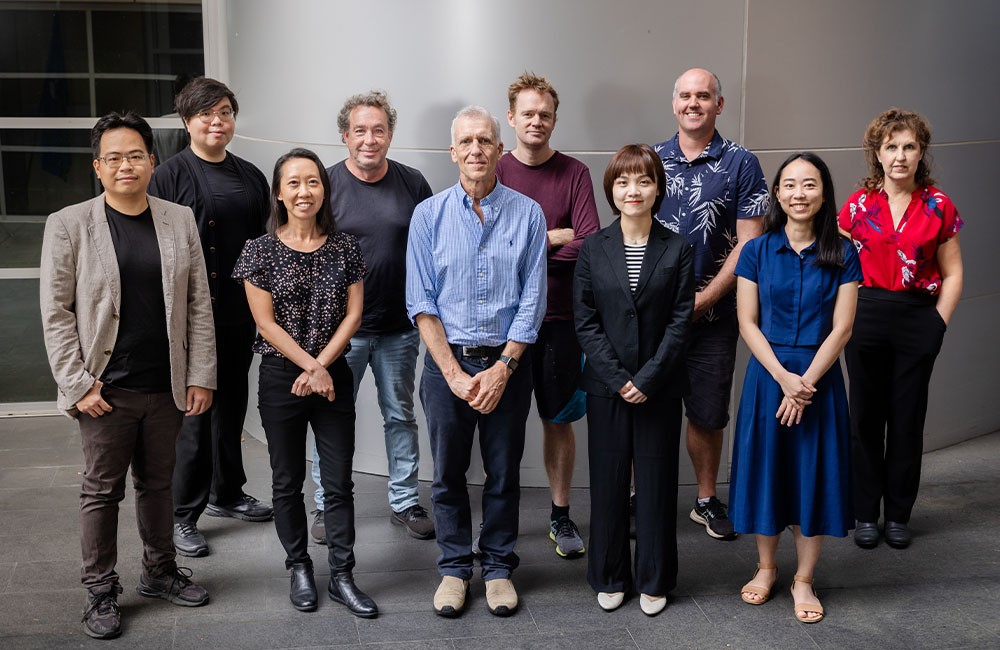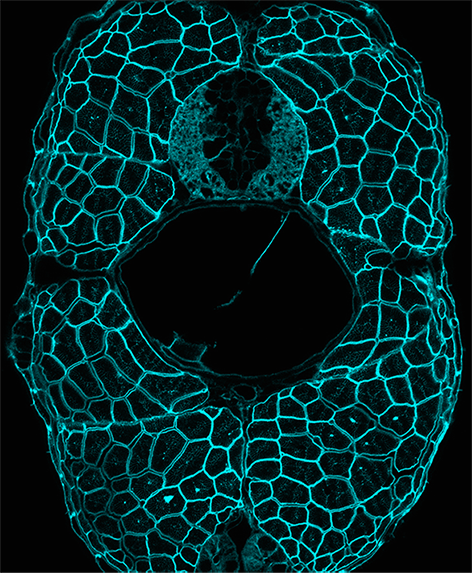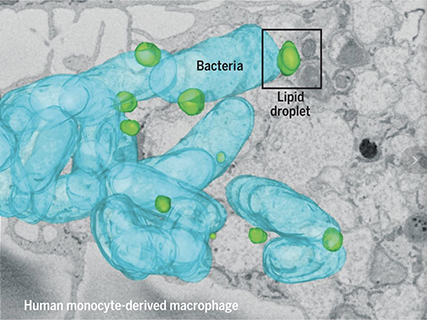Role of the cell surface in health and disease
To understand the cell is to understand life
Within the human body, there are 30 trillion cells and 200 different cell types. Understanding how the cell functions is crucial to understanding every human disease. In our group we ask how does a healthy cell function and what goes wrong in a diseased cell?
We study membrane trafficking and cellular organisation, with a focus on domains of the cell surface, novel pathways of endocytosis, and the cellular role of lipid droplets. We are studying the formation and function of cell surface domains called caveolae, the pathways followed by nanoparticles as they enter cells, and the role of lipid droplets in protecting cells against invading pathogens.

Group leader

Professor Rob Parton
Group Leader, Role of the cell surface in health and disease
Centre for Cell Biology of Chronic Disease, IMB
+61 7 3346 2032
r.parton@imb.uq.edu.au
UQ Experts Profile
Cell surface plasticity in response to shape change in the whole organism
Hall, Thomas E., Ariotti, Nicholas, Lo, Harriet P., Rae, James, Ferguson, Charles, Martel, Nick, Lim, Ye-Wheen, Giacomotto, Jean and Parton, Robert G. (2023). Cell surface plasticity in response to shape change in the whole organism. Current Biology, 33 (19), 4276-4284.e4. doi: 10.1016/j.cub.2023.08.068
Wu, Yeping, Lim, Ye-Wheen, Stroud, David A., Martel, Nick, Hall, Thomas E., Lo, Harriet P., Ferguson, Charles, Ryan, Michael T., McMahon, Kerrie-Ann and Parton, Robert G. (2023). Caveolae sense oxidative stress through membrane lipid peroxidation and cytosolic release of CAVIN1 to regulate NRF2. Developmental Cell, 58 (5), 376-397.e4. doi: 10.1016/j.devcel.2023.02.004
Morales-Paytuví, Frederic, Fajardo, Alba, Ruiz-Mirapeix, Carles, Rae, James, Tebar, Francesc, Bosch, Marta, Enrich, Carlos, Collins, Brett M., Parton, Robert G. and Pol, Albert (2023). Early proteostasis of caveolins synchronizes trafficking, degradation, and oligomerization to prevent toxic aggregation. Journal of Cell Biology, 222 (9) e202204020. doi: 10.1083/jcb.202204020
 Cavin4 interacts with Bin1 to promote T-tubule formation and stability in developing skeletal muscle
Cavin4 interacts with Bin1 to promote T-tubule formation and stability in developing skeletal muscle
Lo, Harriet P., Lim, Ye-Wheen, Xiong, Zherui, Martel, Nick, Ferguson, Charles, Ariotti, Nicholas, Giacomotto, Jean, Rae, James, Floetenmeyer, Matthias, Moradi, Shayli Varasteh, Gao, Ya, Tillu, Vikas A., Xia, Di, Wang, Huang, Rahnama, Samira, Nixon, Susan J., Bastiani, Michele, Day, Ryan D., Smith, Kelly A., Palpant, Nathan J., Johnston, Wayne A., Alexandrov, Kirill, Collins, Brett M., Hall, Thomas E. and Parton, Robert G. (2021). Cavin4 interacts with Bin1 to promote T-tubule formation and stability in developing skeletal muscle. Journal of Cell Biology, 220 (12) e201905065. doi: 10.1083/jcb.201905065
 Mammalian lipid droplets are innate immune hubs integrating cell metabolism and host defense
Mammalian lipid droplets are innate immune hubs integrating cell metabolism and host defense
Bosch, Marta, Sánchez-Álvarez, Miguel, Fajardo, Alba, Kapetanovic, Ronan, Steiner, Bernhard, Dutra, Filipe, Moreira, Luciana, López, Juan Antonio, Campo, Rocío, Marí, Montserrat, Morales-Paytuví, Frederic, Tort, Olivia, Gubern, Albert, Templin, Rachel M., Curson, James E. B., Martel, Nick, Català, Cristina, Lozano, Francisco, Tebar, Francesc, Enrich, Carlos, Vázquez, Jesús, Del Pozo, Miguel A., Sweet, Matthew J., Bozza, Patricia T., Gross, Steven P., Parton, Robert G. and Pol, Albert (2020). Mammalian lipid droplets are innate immune hubs integrating cell metabolism and host defense. Science, 370 (6514) 8085, 309-+. doi: 10.1126/science.aay8085
McMahon, Kerrie-Ann, Wu, Yeping, Gambin, Yann, Sierecki, Emma, Tillu, Vikas A., Hall, Thomas, Martel, Nick, Okano, Satomi, Moradi, Shayli Varasteh, Ruelcke, Jayde E., Ferguson, Charles, Yap, Alpha S., Alexandrov, Kirill, Hill, Michelle M. and Parton, Robert G. (2019). Identification of intracellular cavin target proteins reveals cavin-PP1alpha interactions regulate apoptosis. Nature Communications, 10 (1) 3279, 3279. doi: 10.1038/s41467-019-11111-1
In vivo cell biological screening identifies an endocytic capture mechanism for T-tubule formation
Hall, Thomas E., Martel, Nick, Ariotti, Nicholas, Xiong, Zherui, Lo, Harriet P., Ferguson, Charles, Rae, James, Lim, Ye-Wheen and Parton, Robert G. (2020) In vivo cell biological screening identifies an endocytic capture mechanism for T-tubule formation. Nature Communications, 11 1: . doi:10.1038/s41467-020-17486-w
- Lipid droplets as innate immunity hubs (DRIMMS) (ERC Synergy Grant administered by Clinis Foundation for Biomedical Research - August Pi i Sunyer Biomedical Research Institute)
- Tracking nanoparticles: from cell culture to in vivo delivery
- Functional analysis of a novel variant in CAV3
- Translating membrane proteins into therapeutics; from bedside to bench (NHMRC Program Grant administered by Monash University)
- Making muscle: molecular dissection of membrane domain formation
The possible research projects listed below may not be comprehensive or up to date. Please feel free to contact Professor Rob Parton (r.parton@ imb.uq.edu.au) for more information. Your own research ideas are also welcome.
- Zebrafish as a model to understand human muscle diseases
- Structure and function of a new family of caveolar coat proteins
- Novel pathways of endocytosis in cultured cells and in tissues
- Bioengineering of novel nanovesicles for drug delivery
- Lipid droplets and immune defence


 Caveolae sense oxidative stress through membrane lipid peroxidation and cytosolic release of CAVIN1 to regulate NRF2
Caveolae sense oxidative stress through membrane lipid peroxidation and cytosolic release of CAVIN1 to regulate NRF2 Early proteostasis of caveolins synchronizes trafficking, degradation, and oligomerization to prevent toxic aggregation
Early proteostasis of caveolins synchronizes trafficking, degradation, and oligomerization to prevent toxic aggregation